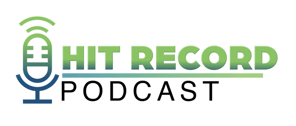Episode 70 - Guest CMO Discusses How Real Content Improved Social Media Ad Results by 50%!!


Don't Miss An Episode, Subscribe Now

Key Takeaways:
1. Authentic Content Boosts Efficiency: Using real, employee-generated content on social media has halved website traffic costs for Allegiance Credit Union.
2. Leverage Expert Partnerships: Collaborating with FI GROW Solutions allows Allegiance to focus on creating engaging content while FI GROW handles ad targeting and optimization.
3. Social Media as a Multi-tool: Beyond marketing products, Allegiance uses social media for brand building and recruitment, enhancing both customer and employee engagement.
Transcription:
Meredith Olmstead:
Hi there. I'm Meredith Olmstead, CEO and Founder of FI GROW Solutions. We are a digital marketing and sales consulting agency. We work exclusively with banks and credit unions. I am here with one of our clients. I'm so excited. This is one of our first podcasts, I think it might be the first podcast we've ever done with a client. We've had lots of other guests, but today I have CMO at Allegiance Credit Union in Oklahoma City, Christin Vaughn on with us. Say hi, Christin.
Christin Vaughn:
Hello. Hi everyone.
Meredith Olmstead:
So Christin is kind of trial by fire here today, and we asked her to come on because she's had some really, really cool results recently that one of my marketing strategists shared with me and my digital ads team around social media digital ads results with custom content that her and her team have been spearheading on their social media platforms, really specifically Facebook and Instagram and having some really great results. So I was like, "You know what? Let's have Christin on. Let's hit record and talk a little bit about what they did to create this content, what kind of content we're actually talking about, why the results were so good and kind of how they address roadblocks in the content."
The first thing is results. This always tricky with social, and Christin and I were talking about this, but results on social media are varied, right? You can talk about vanity metrics like likes and comments and clicks and whatever, or you can talk about conversions and traffic and driving people to your website. So there's a lot of different varieties of results. But Christin said something really interesting to me about the purpose behind social media generally for Allegiance. So Christin, can you talk a little bit about what do you see as the primary goal of your social media efforts at Allegiance?
Christin Vaughn:
Yeah, for sure. First off, thank you for having me on. I feel honored and really enjoy the partnership that we have with FI GROW. But for us social media, first and foremost it is a brand awareness tool. It's a way to put faces because we use a lot of our employees and our content to our name and to show who we are, what our culture is and stuff like that. So obviously it doesn't mean that we don't focus on getting products and services out there and want traffic to our website and stuff like that, but it is not the end-all be-all to us. We don't think that Facebook is ever going to be the number one driver of finished loan applications. So we set our expectations as to what is the purpose of social media. Yeah, it's very much brand and our personality.
Meredith Olmstead:
Awesome. Okay. One of the things that we do when we're talking about engagement ads for clients is we grab actual posts that people have done on Facebook or on Instagram, we turn those into engagement ads. But we also can turn them into lead generating ads, like lead clicks or page click ads as well.
The interesting thing about what they've done at Allegiance is they've basically taken fun content that's done by their employees and posted on their social media, and you have to check it out if you haven't ... Allegiance Credit Union's social media is fantastic, but they've actually shown that by using that real content of people being silly or doing a song or a Boomerang or talking about a product or whatever it is that they're talking about, that we've actually, with our digital ads team, have been able to drive the cost of traffic to their website down by about 50%, which is really crazy because a lot of times we think of that kind of traffic coming from more generic posts about rates or somebody with a car and a key and that kind of thing for auto loans or whatever.
What did you do? What did have to do in order to get that kind of more organic real content turned into ads that then were converting?
Christin Vaughn:
Yeah, I mean really it was something we were already doing and so it was like, "Okay, we put out all this great organic content," and there was a time where I was better about boosting some of the stuff that we thought was better, we put more effort into, but I'm doing a lot of other things. So it kind of got to where I realized we're wasting the potential of the amazing content that our Marketing Coordinator, Wendy here makes.
So it was like, "How do we get more out of this? We're already putting it out there, it's getting good engagement and stuff like that. Great, that brand awareness, but how could we do even more?" So that's when we connected with Ida over at FI GROW and was kind of like, "Can you boost this stuff for us or just throw it into the ad mix?" I'm not a social media ads expert by any means. I mean, I really haven't been in there, touched that stuff in years and it's constantly changing. So that's where I think the partnership works out because we're the experts on our brand. We're here in our branches and can get the content and do the things.
We know Oklahoma City's community, you guys don't. But then I can say, "Look, here's a post. You go do the ads thing with it. You go do the proper targeting," and yeah, you're correct. That's where we saw 50% increase in traffic with no change in our budget. We literally just like, "Let's take down some of the generic stock content type of posts we're running about auto loan rates as low as blank," and there's a stock image and everything looks nice and professional and everything like that. But once we threw in, "Hey, these are reels we're already making that's a cute fun way to talk about our auto loan promotion. Let's throw an ad in there, and instead of doing just the engagement style of getting people to like and follow our pages, send them to our auto loans page, let's get actual more traffic out of that."
We've got retargeting set up on the website. So then some of these people that have gone to the auto loans page, maybe they didn't actually fill out the application, now they're getting an email from us about ... Again, it's just deepening that relationship and their awareness of who Allegiance is.
Meredith Olmstead:
Yeah. I asked our digital ads manager, Ida to send me some results, and you shared those with us. But we're talking about results that weren't bad in the first place. So you were getting solid leads to your product pages in the $1.45-ish range, which is a pretty solid result for financial institutions. But by changing the different types of content, with the same targeting and the same tracking results, the same budgets, you were able to cut that cost per landing page view to 70 cents. So driving people from social media to your website for less than three quarters, basically for less than 75 cents is insane. You don't see traffic going to bank or credit union websites for under $1.00. Even $2.00 is not a bad result on social. So it's really impressive that the type of content was able to make such an impact. Anything come to mind of just an example or two of content that worked really well?
Christin Vaughn:
Yeah. A lot of it is staying on top of the trends, which again, I can't take credit for. That's all my Marketing Coordinator, Wendy. It is a time commitment. Someone has to be focusing on that kind of stuff. I'm sure some of it she sees at her own time, but it's when we've capitalized on some sort of trend that was going on. Recently there was this workout trend where police officers were doing it and hospitals, different people. So we did a credit union workouts, and you'll have to go look at it. I'm probably doing a terrible job of describing it, but she'll see something and she's on TikTok, and so a lot of times things go to TikTok first before they make their way to Instagram.
Meredith Olmstead:
Then they come over to Instagram and things like that.
Christin Vaughn:
So she'll be like, "This is really popular on TikTok right now. Is there a way we can make this financial themed," and stuff like that. So usually when we capitalize on those type of things. I get that can be a big ask for certain teams. They're just like, "I don't have time to figure out," or, "I don't have the creativity to figure that out." Sometimes it's just a video that is a staff member saying a few things because again, it looks more real. It's a real person. It's someone inside of our branch versus just a stock photo.
Meredith Olmstead:
Gotcha. So I think that's a good segue to the last thing we were talking about, which is the roadblocks. This isn't easy as 1, 2, 3, like, "Oh, I'm just going to snap my fingers and all of a sudden have amazing content living on our social media platforms that's getting incredible engagement and converting traffic, probably pretty high quality traffic." People who are going to leave social media to go to a bank or credit union website is pretty qualified, right, to go to a product page. So when we talk about roadblocks to that, you talked about, you've already mentioned her a couple times, what's the main way that you tackle the roadblock to having the capacity to put this kind of energy and time into content?
Christin Vaughn:
About the clicks and conversions. However, when we start investing a little bit more time and effort in letting the staff member ... I mean, our marketing coordinator, I would say 50% of her job is social content creation. I mean, we are a two-person marketing team. Again, we have FI GROW as a partner agency, and so that is a huge help. But then also that, "Okay, well, we're not going to be the ad specialist and we're not going to invest our time in being the specialist on the advertising side, but we'll spend time and make sure we have a staff member supported," and our staff is just wonderful as far as the other people being involved in it. We will go ask people, "Will you be in it?" And they typically always say yes. You just have to have a lot of conversations with-
Meredith Olmstead:
I think it's nice too when you're bought in and then you get other people to help and jump in and then they see consistently other people putting themselves out there. It makes it a little easier to then let down their guard. I will say it's huge not trying to layer authentic content creation on top of an already existing 30 or 40-hour a week job.
It's like because you have somebody, she's a more junior member of your marketing team, and that's okay, she's young, she's got great ideas, but because a solid portion of her job description revolves around driving engagement online with social or wherever, she has the capacity because it's part of her responsibilities. And so that's really important.
I like the fact that you are acknowledging that you know your brand better than anyone else. You've never outsourced the content side of things, which is really, I think, important. You can outsource a lot of things, but I think trying to outsource the tone and the voice of your brand is virtually impossible.
You said a couple of last things that I thought were really useful. One thing was how you use social around hiring and then how your executive team has bought in. So can you talk about both of those things as we finish up?
Christin Vaughn:
Yes. For sure. That is something that I constantly am trying to share with other marketers that if they don't already realize this or to make sure that they're conveying that to other leadership at the credit union is how we just noticed ... I mean, it's probably been 10 years ago now, but that we started noticing employees would say, "Oh yeah," in their first week of orientation, "Oh, actually I went to your Facebook, and I thought you guys looked really fun so that's why I decided to apply," or, "That's why I accepted." When they were in the decisioning phase of whether or not they wanted to come work with us. They were like, "I looked at your social media and you guys seemed like a really fun place to work." That's a recruitment tool. I mean, this isn't even LinkedIn. We've just now started to try and get more active on LinkedIn. That's never been somewhere I would say we're very good at.
This is Facebook and Instagram that employees are saying, "I just saw the culture there and it looked fun. It looked cool," and I think that you'll be drawing in the types of employees you want because if someone else looks at it and says, "Oh, that's cringe," well, then we're not the place for you. You know what I mean? For whatever reason, what we're putting out there and the vibe and the causes and the things that we support you hate, well then good. I'm glad that you see that on our Facebook and that you don't come to work for us.
Meredith Olmstead:
True.
Christin Vaughn:
Because then there's not alignment there. So we really noticed that and have had countless employees make just unprompted comments about our social media when they started. I encourage any other marketers here to keep that in mind too, that this is a tool for hiring that shows people are you a place that they want to work? Obviously bringing in good employees is huge in the member experience. If you're not hiring good people, that is going to be far more detrimental to you than Facebook ads, how they perform and stuff like that.
Meredith Olmstead:
Awesome.
Christin Vaughn:
And the exec team, you asked me, super supportive. I'm very, very grateful here that the leadership has bought on a long time ago. Again, that it's bigger than just, Facebook isn't just an online billboard. It isn't just pay-per-click ads within social media, that they get the bigger picture. But I do challenge other marketers. You've got to help them see that because it is easy to get caught up in the like, "Why are we spending X amount of dollars a month on advertising if you can't tell me exactly how many closed autos we got out of that one ad," or stuff like that. So it's just continuing to have those conversations and making them understand what the bigger picture is to social.
Meredith Olmstead:
Yeah. Awesome. Well, thank you so much, Christin. I really appreciate your time. If you all are interested in learning more about digital ads on social media or anywhere else online for banks and credit unions, please visit us at figrow.com. We have lots of other podcasts, case studies and other information about our services. But otherwise, let's just all get out there and make it happen.







.jpg?height=500&name=bigstock-Comment-Communication-Social-M-120160496%20(1).jpg)
Blog comments